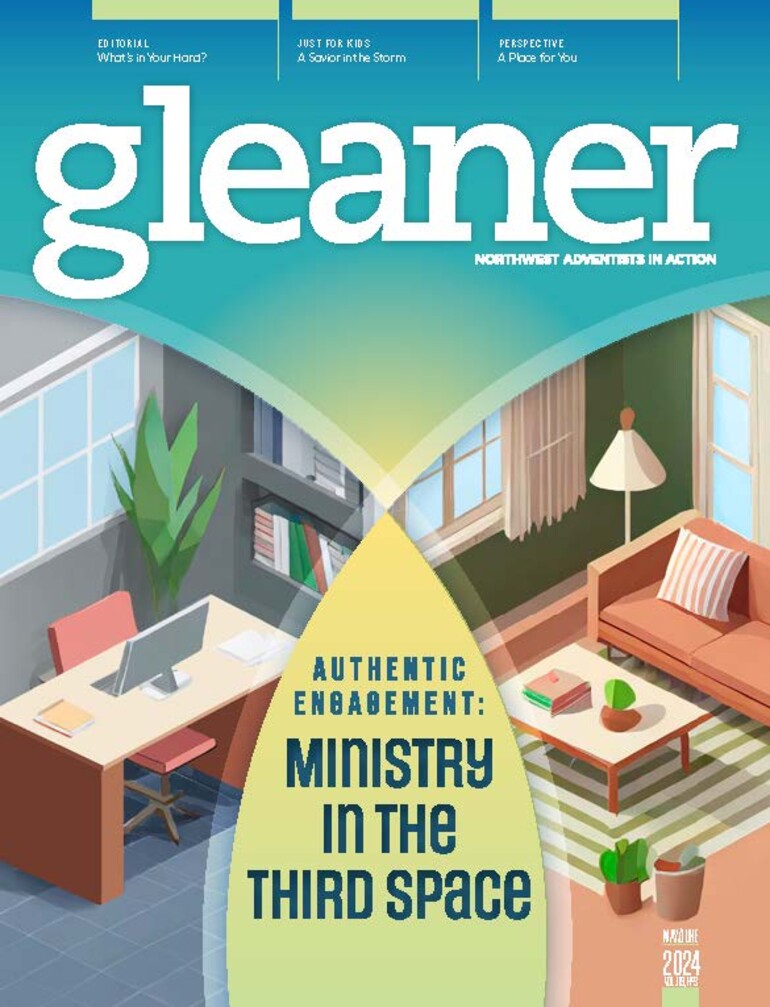North American Division of Seventh-day Adventists is embarking on an ambitious mission to cultivate a network of 10,000 digital disciples. Whether you're already sharing your faith online or curious about getting started, this initiative has something for you.
As a media strategist, Ernesto Hernandez, Washington Conference media director, actively works in a faith-based digital environment and serves as a frequent coach to pastors, creatives and churches. Hernandez brings a forward-thinking, innovative mindset to his role. He is passionate about empowering individuals of all ages and stages — especially those active on social media — to leverage their platforms for good.
In this conversation, Hernandez shares how individuals can make a meaningful impact through their online presence.
Ernesto Hernandez, Washington Conference media director, frequently coaches pastors, creators and churches on how to take their digital engagement to the next level.
Q: What is the basic definition of digital evangelism?
HERNANDEZ: Digital evangelism is a two-part phrase: you have evangelism — meaning sharing the gospel and the good news with my community — and then you have digital — anything that is internet-connected. Digital disciples or evangelists find creative ways online to share their faith.
Evangelism is something we've done face-to-face for so many years. Digital is a space that was created in the last 20 years. So, then, the question becomes: “How can I share the good news in this interconnected space?”
Q: What are some examples of digital platforms that have been effectively used for evangelism that you're seeing?
HERNANDEZ: I'll share three of my favorite ones I've seen recently.
My dad does digital evangelism through WhatsApp. He sends a little devotional audio every morning to a list of 500 people that he’s collected through his travels. Through WhatsApp, he's able to stay in touch with them, even if they're remote, and he can continue sharing the gospel through that platform.
Here’s another one that I really love: There’s a teenager I met about two years ago. He started a blog in Spanish called Un Joven Jota — An Adventist Teen — and he shares little quotes or small devotionals that he hears from preachers. He’s gained so much traction. He has a following now in the thousands.
I have a friend with a Bible Minecraft ministry. He invites young people, usually 10- to 22-year-olds, to play in a safe environment and build Bible scenes together. He will give a prompt and 30–50 people in this video game environment will collectively build Noah’s Ark, for example.
Q: What do you think are the biggest challenges with using digital tools for evangelism, and how can they be overcome?
HERNANDEZ: One of the biggest challenges that I see is people trying to go into digital evangelism but not understanding the platforms.
Let’s say I'm going to go into construction because there's a lot of need for houses and I just start building. Well, I have to know my tools. I have to know what type of housing is allowed. I have to learn a little bit of code. It's the same way with digital evangelism.
The next huge obstacle I see is that sometimes people don't understand who they're trying to reach. People are going to say, “I want to reach everyone.” Define your niche and then your people will find you.
Q: How do you believe churches can leverage social media to reach a broader audience?
HERNANDEZ: First, do not spread yourself too thin in the digital space because it’s a huge space. Once you understand your platform and your audience, you're at a good point to get started as a church. Then you can start creating a strategy and establishing a social media team.
I know about a church that has chosen to do Instagram and WhatsApp community groups — two opposite platforms. Yet, the team works well to maintain a sense of community and to reach others who are looking for community. They’ve trained their team in what’s effective in posting, using hashtags, understanding the platform and working with the algorithm.
Q: In your experience, what type of content resonates on different platforms with audiences, especially for sharing messages of faith?
HERNANDEZ: It depends on who you are trying to reach. If you're trying to reach a newcomer audience, you have to lead with a basic message of hope. I like to check myself on content creation by asking, “Can my neighbor relate to this?” Many of us are waiting for the Second Coming of Christ, yet many haven't even heard of the First Coming.
After you have your target audience, you will start introducing them to this story. The next question is, which technology? Some people are going to say, "Oh, podcasts are effective, or YouTube's effective, or TikTok's effective," but it's an ever-evolving world.
Remember my dad? He said, “I don’t understand YouTube or Facebook that well. I’m really good on WhatsApp and this is what’s working for me.” He shares a lot of Christ-centered messages with an introduction to Christianity.
Q: What additional advice would you give to someone who's new in this space?
HERNANDEZ: First of all, it's scary. You're walking into an unknown space. We like our comfort. We like what we know and it's very hard to walk into a space we don't know.
These platforms were built to be addicting. You have to be careful and create a proper strategy. You have to be intentional with your usage of social media and the amount of time you’re investing into this ministry.
There are a lot of people out there doing a lot of great things with digital evangelism. There are a lot of us coaching. I think the fact that if someone is reading this, or if someone is listening to this, it means God has already placed that seed in your heart to be here. It’s up to us to take that first step or next step.
Start with doing inventory of what digital tools you're good at and see what God’s calling you to share. We can be a light in a very dark space. That is the digital space.
Watch the full 30-minute conversation below:










